Running Book Reviews 2019
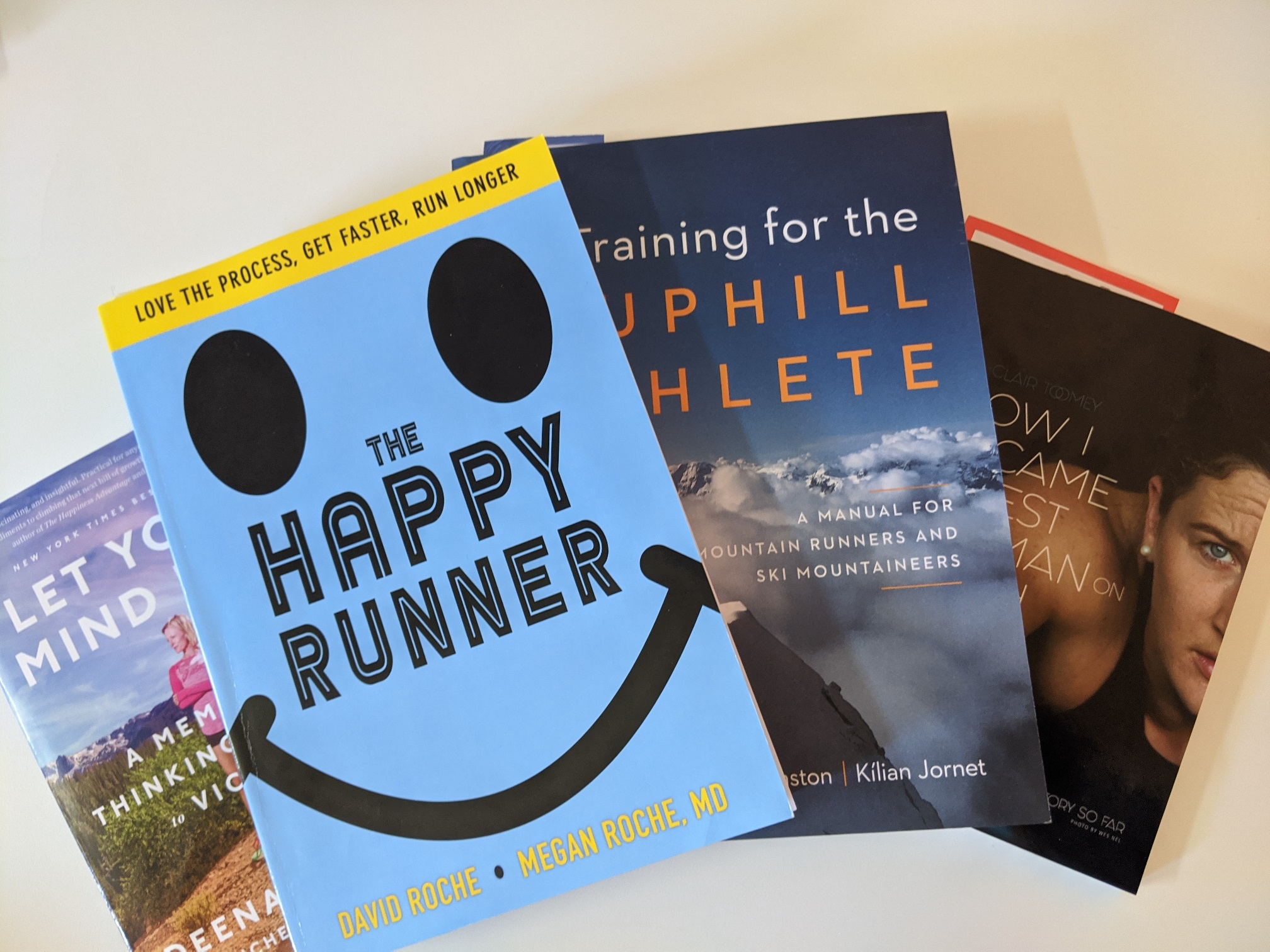
The Happy Runner: Love the Process, Get Faster, Run Longer – David and Megan Roche
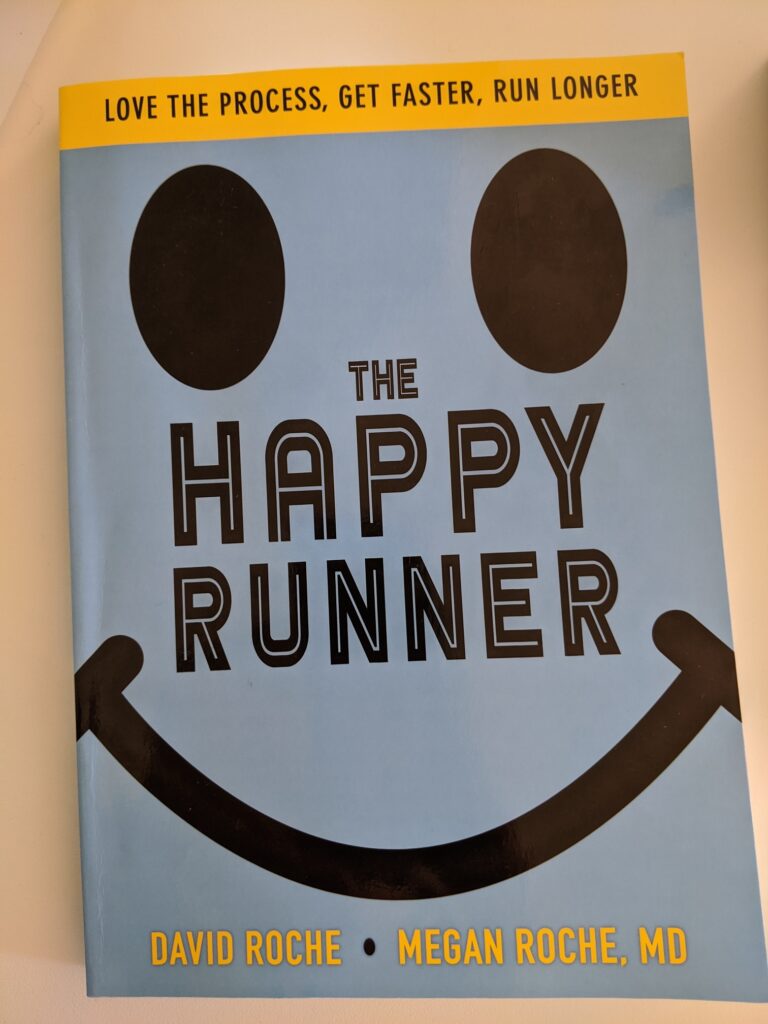
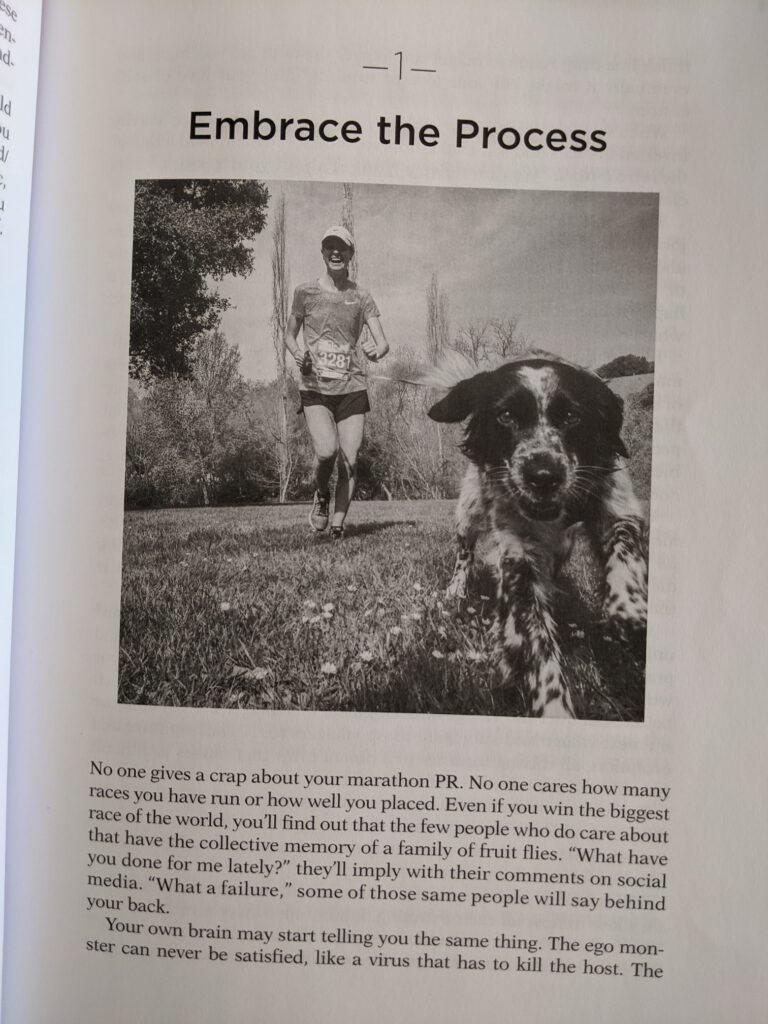
Recommended for: Everyone, including people in a running rut, people who are trying to find their running identity, people who are injured, people looking for a running book that is more than a training plan.
Highly recommended for: burnt out runners, people trying to find their running “why”, and people trying to rediscover the joy of running.
The main message David and Megan Roche are spreading is that “you are enough”. Your running results, times or whether you have run or not that day do not affect how worthy you are as a human. You are always enough. Your happiness and wellbeing should always come first.
I was sceptical about this book to start with. It looks like a relic from the 70s with a giant smiley face on the blue front cover. There is a lot of (attempted) humour intertwined with the text as well as parts of the book being told from the perspective of Addie dog. There are references to unicorns and zoomies, which I initially found childish and annoying. Then I started loving the book because it is something you can read for support and laughs when you might need a small pick me up. By the end I loved the author’s positive and open approach to life. It is hard not to like David and Megan Roche.
The book is divided into two parts. Part 1 discusses the more difficult parts of running including finding the reason why you run, mental health, eating disorders and ageing. The Roches outline how to start enjoying the process of running rather than using it solely as a form of external validation. The Part 1 I have re-read the sections in Part 1 more than I have the sections in Part 2, and it is really what sets this book apart from other running books.
Part 2 contains concrete training advice for running along with sections on cross training and strength training. They even have a program for runners who hate strength training which you can get through at the end of a run. The running advice centres on David Roche’s approach of doing almost all running under 85% effort. This is similar to the generally accepted approach that to develop as a runner you need to do a lot of easier running and focus on developing your aerobic base. A long term approach is emphasised and there are examples that show long term aerobic development will trump short term specificity. Training specifically for an event (ie a technical mountain run) can improve performance, but only if built on the aerobic base.
I may be a bit biased because I met David Roche at the Spartan World Championships in 2019 and even got to pat the famous Addie dog, but I really like his coaching philosophy and approach to running, and highly recommend this book. I had to order my copy internationally, but I have noticed that Dymocks Canberra now stocks The Happy Runner so it is now more widely available in Australia.
Training for the Uphill Athlete – Steve House, Scott Johnston and Kilian Jornet
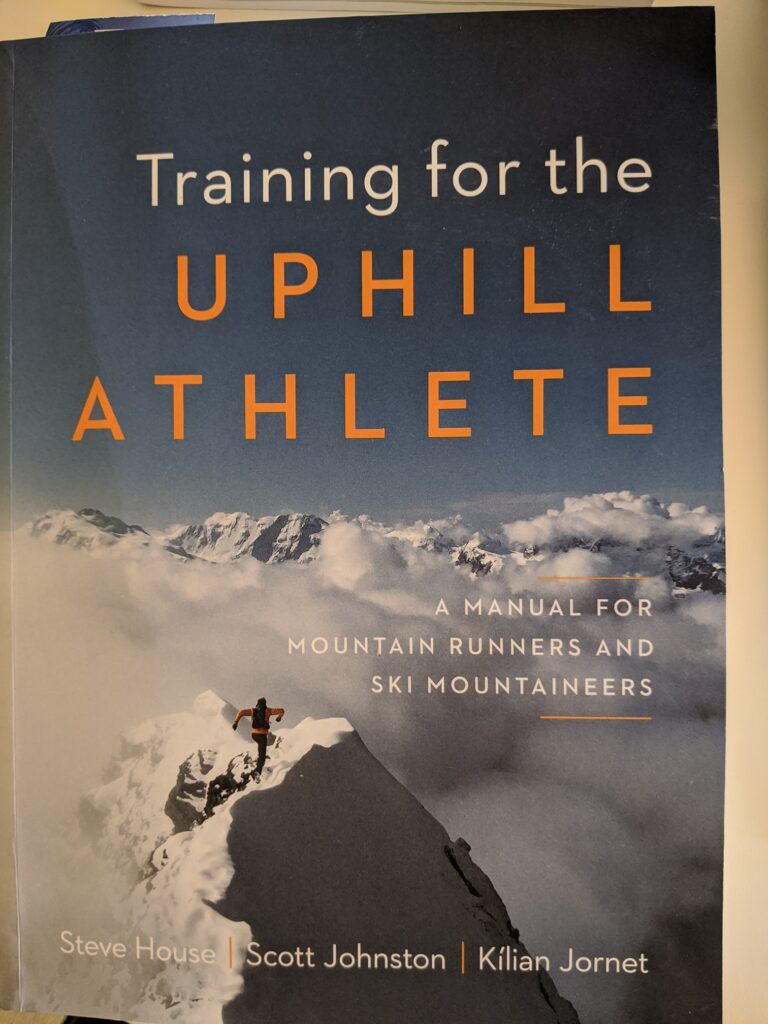
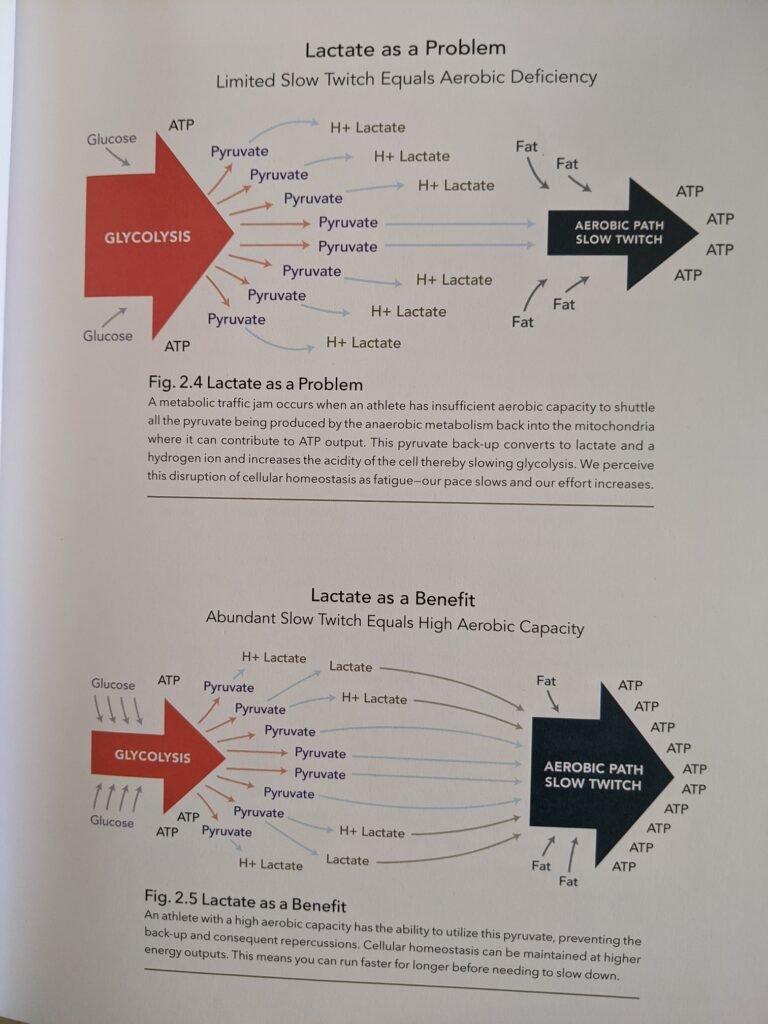
Recommended for: mountain lovers, mountain runners, ski mountaineers, OCR athletes who want to find out how to prepare for mountainous courses
This book is a mountain running bible. Building on the aerobic training theory set out in Training for the New Alpinism, this book adds specific training principles for all mountain endurance athletes including skyrunners, trail runners, ski mountaineers and climbers. Although this book delves straight into theory and training principles, it is surprisingly easy to understand. It also has extremely inspiring imagery and personal accounts of top mountain athletes. Usefully, if you live in or close to the mountains, this book can cover both your summer and winter pursuits and even explains how to transition from your summer sport (running) to your winter sport (skimo/cross country). Despite the multi-sport focus, most of the book focuses on mountain running with some specific chapters for other sports.
The authors have three lifetime’s worth of mountain experience between them and this shows in the attention to detail. They warn of “aerobic deficiency syndrome” which is where athletes have an under developed aerobic system due to spending too much time doing hard training above their aerobic threshold and not enough time training below aerobic threshold to increase the size of their aerobic engine. OCR athletes should really pay attention here, because the training style that many OCR athletes adopt of low volume high intensity running training is a recipe to develop “aerobic deficiency syndrome”.
House, Johnston and Jornet focus on aerobic development above all else due to the large performance gains from raising the aerobic threshold and its relevance to mountain endurance sports. They see little utility in focusing on VO2 max because according to the authors, athletes reach their VO2 limit early in their careers, and this is limited by genetic factors and does not correlate as directly to gains in endurance sport as increasing the aerobic threshold.
The authors use a 5 heart rate zone system to help guide training and how much time should be spent in certain heart rate zones. They also usefully provide ways to calculate your aerobic and lactate threshold heart rates without having to do expensive lab testing. Although there are no “12 week training programs”, there is sufficient detail that you could read the book and then make a training plan for yourself using the principles.
The theory is broken up by interesting athlete stories and beautiful mountain imagery. If you are after a less instructional more inspirational mountain sport book I would go for Emilie Forsberg’s Skyrunner (the books cost about the same).
Let Your Mind Run: A Memoir of Thinking My Way to Victory, Deena Kastor
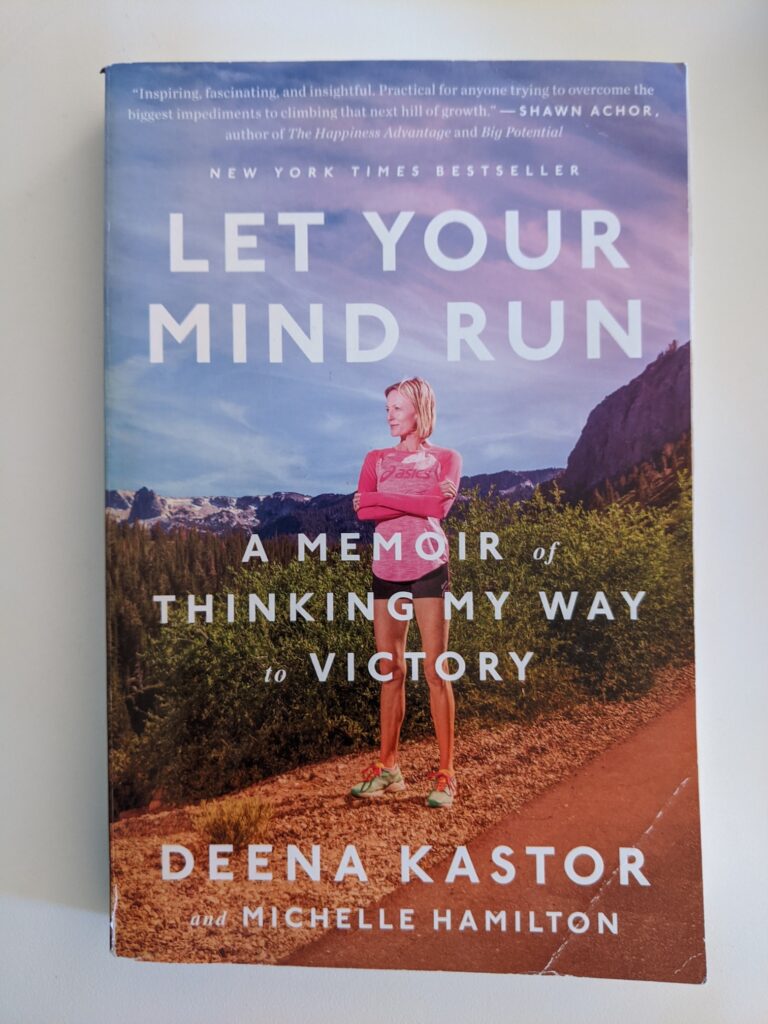
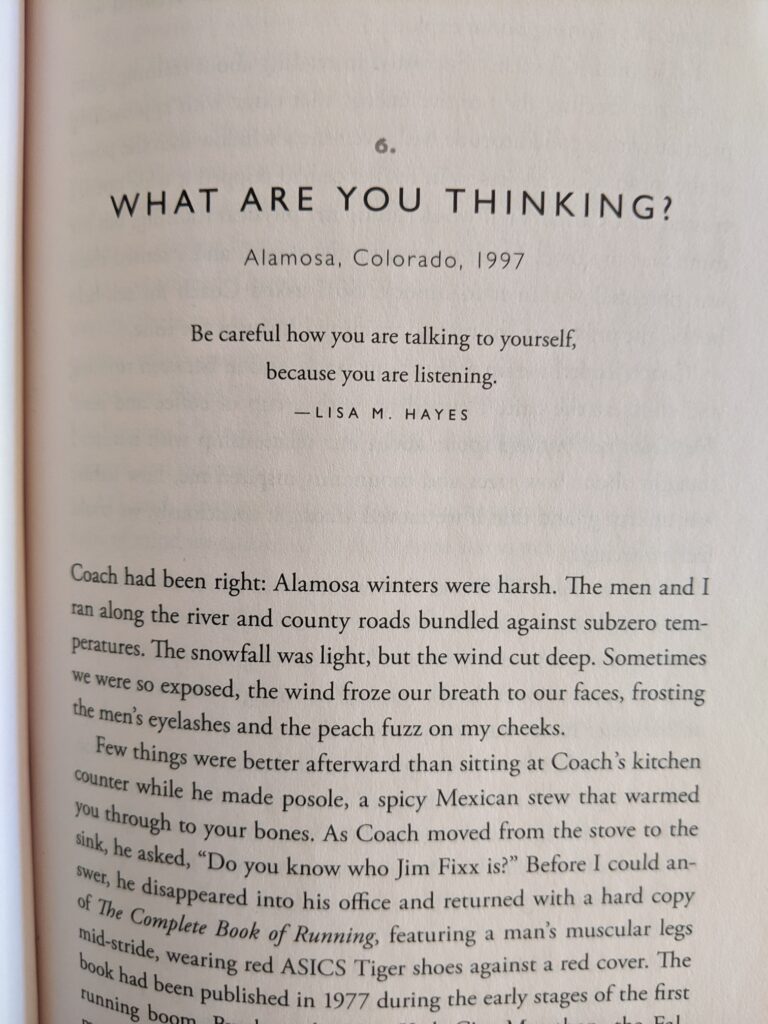
Recommended for: people looking for inspiration, people interested in mindset and performance psychology, people interested in altitude training
An inspiring autobiography outlining how Deena went from child cross country prodigy to constantly injured college track and cross country runner to develop into one of America’s best long-distance runners. Deena outlines how her shift from a fixed to growth mindset freed her to run faster and stronger, as well as how she went from cross country distance to winning marathons. Each chapter has a theme running chronologically through her career and how she developed into an optimistic person. Each chapter starts with a quote which foreshadows the learning Deena went through in the following chapter.
During college, Deena had a mixed relationship with running, and alternated spending time running with her burgeoning baking business. After college she was minded to open her own bakery, but in the end decided she wasn’t finished with running and moved to Alamosa to train at altitude under coach Vigil. This is a great read to gain an insight into the elite road runner mindset and also details the incredible training load that these athletes take on each week. It covers Deena’s bronze medal performance at the Athens 2004 Olympic games as well as her retirement from elite marathon running.
At the back of the book Deena has included some exercises on how to implement some of the mindset techniques she discusses in her book. This part of the book is titled “The Optimists Guide 7 Mental Habits for Reaching Your Potential and Living a More Positive Life”. I found this section quite basic but it is only a few pages and if you are new to sports psychology and goal setting you could find the exercises useful. I would buy this book for the incredible and inspiring story rather than the pages at the back.
How I became the fittest woman on earth - Tia-Clair Twomey
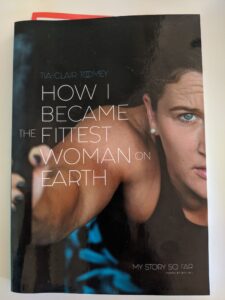
Recommended for: anyone into crossfit, Olympic lifting, endurance sports
I read this autobiography in one sitting because it was almost impossible to put down. The book is written like a traditional autobiography starting with Tia’s childhood in country Queensland where she grew up on a farm, swimming in the river and running on the cross country track her Dad made for her. Tia writes openly and honestly in a relatable voice which makes you love her even more.
This book confirms that there is no secret to success except for hard work over years and years. Although Tia saw success in Crossfit almost straight after starting the sport, she already had an elite sports background and had been training double session days since primary school. In addition to her inspiring story, Tia discusses a few issues that often go unspoken including how she initially struggled with accepting her weight gain and muscles when she got seriously into Crossfit, and how she was initially shunned by the crossfit community. She details how important it is to have strong female role models and to create supportive communities that are inclusive of everyone. It was also interesting to read about her difficulties competing in both Crossfit and Olympic lifting at the same time with the two sports being so insular, and such limited places on the Olympic lifting team, the negativity from other coaches and competitors made it a really cut throat environment. Tia backed herself despite this negativity.
The book was published in 2017, so does not cover Tia’s participation in the Crossfit Games 2018 or 2019. It does cover her 2015 and 2016 second place and 2017 first place finishes at the Crossfit Games and competing in the Rio Olympics in 2016.
There are a few bonus pages in the Appendix at the back of the book that includes information like ‘how to recovery like a pro’, ‘dropping weight for weight lifting’ and ‘5 reasons to squat’.
The Brave Athlete Calm The F*ck Down and Rise to the Occasion – Simon Marshall PdD and Lesley Paterson
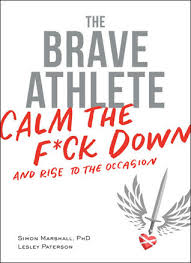
I initially hated this book because of the crude, unnecessary language in the title. However it is written by Simon Marshall wo was a professor of behavioural medicine at the University of California and a professor of sport and exercise psychology at San Diego State University before he moved to full time performance sports psychology consulting.
The dedication reads “To all the confident, motivated, well-balanced, and happy athletes…this book isn’t for you”. The book is usefully divided into four parts. ‘The Basics’ covers the science of the brain and simplifies the way parts of the brain interact by creating the Chimp, Computer and Professor brain. The Chimp, Computer and Professor often clash with each other and have inconsistent goals. The next three parts of the book categorises the psychological problems atheletes face, so you can go to the chapters relevant to you:
1. Heart – hone your passion, motivation and identity
a. I wish I felt more like an athlete
b. I don’t think I can
c. Setting goals is not your problem – the secret of doing
2. Wings – deal with obstacles, setbacks, and conflict
a. Other athletes seem tougher, happier and more badass than me
b. I feel fat
c. I don’t cope well with injury
d. People are worried about me – exercise dependence and the incessant need to do more
3. Fight – get stuck in with new battle skills
a. I don’t like leaving my comfort zone – how to cross the fear barrier
b. When the going gets tough, the tough leave me behind – resisting the urge to quit
c. I need to harden the f*uck up – learning to embrace the suck
d. I keep screwing up – developing Jedi concentration skills to become a better athlete
e. I don’t handle pressure well – how to cope with stress, anxiety and expectations on race day
Not every chapter is going to be relevant to you, but I found that I have dealt with issues in most chapters at some point in my 30 years of life and it would have been really helpful to have this book at those times. Each chapter explains the science behind how the psychological problem occurs and then offers extremely useful practical solutions on how to deal with the problem. The reason I have set out all the chapters is because I think this book is worth buying even if only one chapter applies to you.
I didn’t have much use with the Heart section, I have been an athlete my whole life, so I think that helps with those problems. If you are a new athlete then this section could be very useful. There are a lot of chapters in the Wings section I found useful particularly (c) and (d) because I suck at having injuries and I have had people worried about my training in the past. Training for performance and not just for the sake of training is probably the hardest thing for me. The fight chapter titled ‘I don’t handle pressure well’ will be helpful for anyone who is performing under real pressure (i.e. racing at a national championships, at an international level, at a world championships, needs to podium to keep sponsorship). Unlike self help articles in magazines, the authors in Brave Athlete do not tell you there is no pressure, because there is. Instead, they give you 12 strategies to try to perform (perform the skill required as quickly as possible) despite this pressure.
Even if you don’t think you need this book now, it is useful to have in the book shelf for the future. I purchased this as an ebook. Don’t do that. You will be referring to this book so often I highly recommend hard copy.